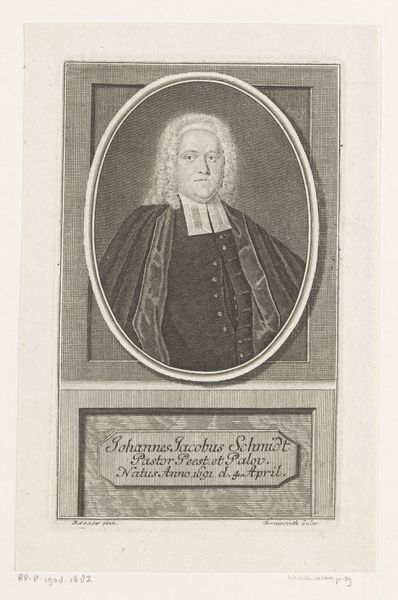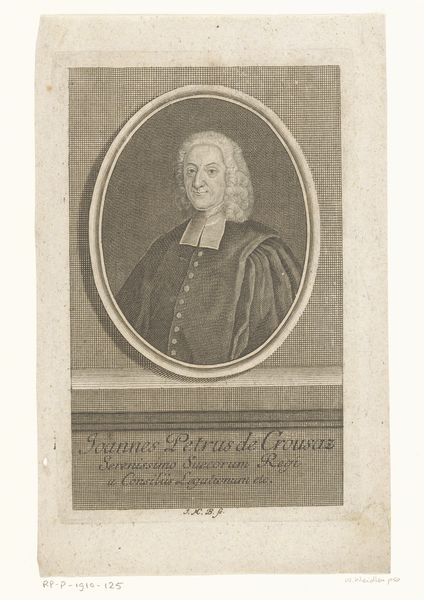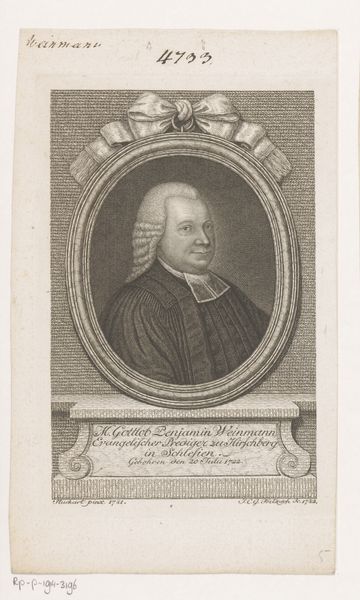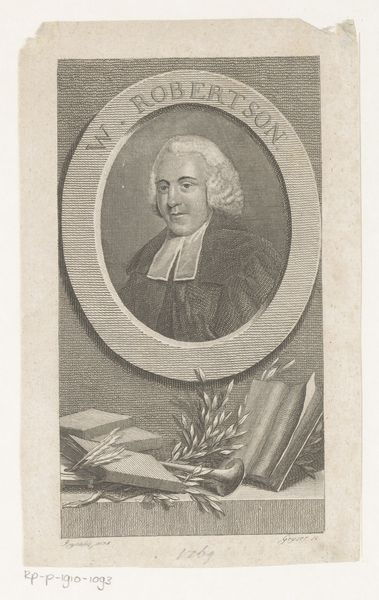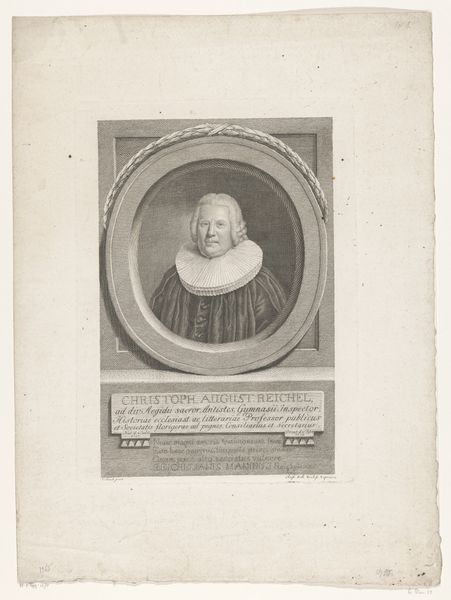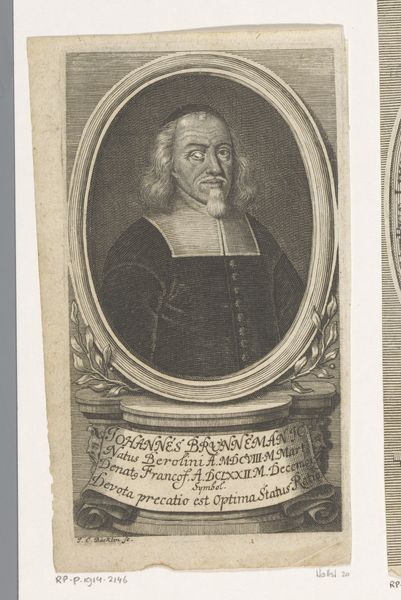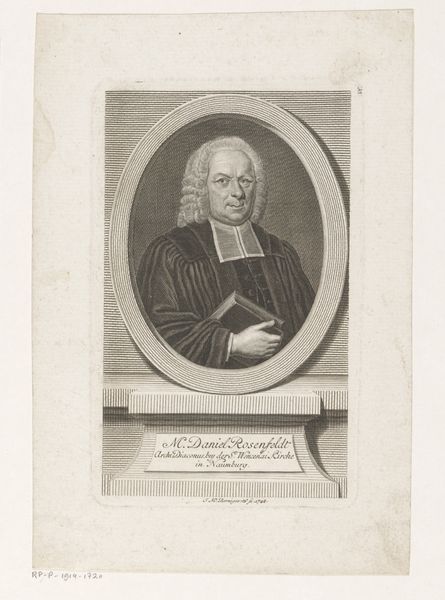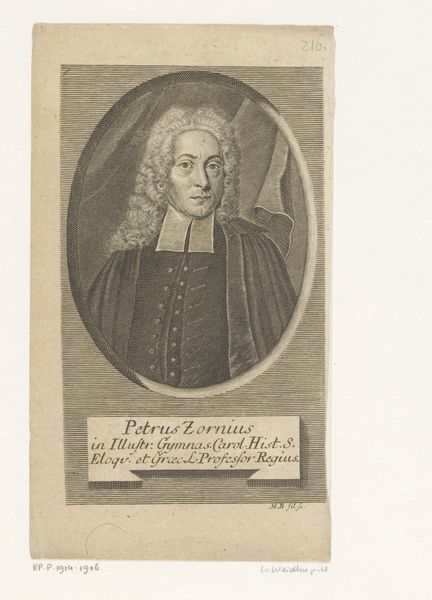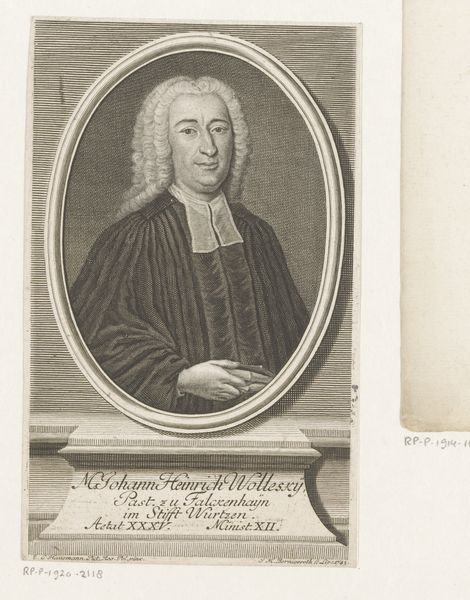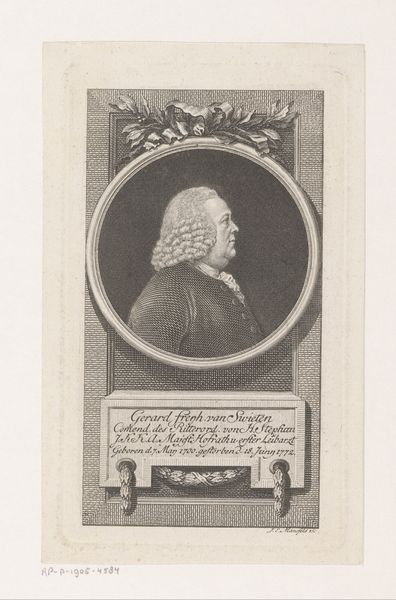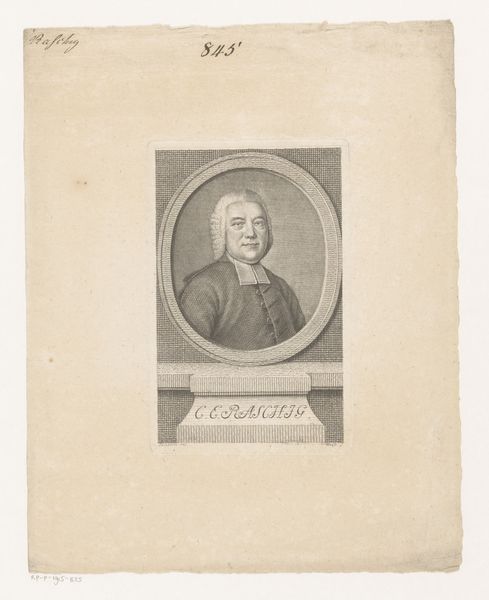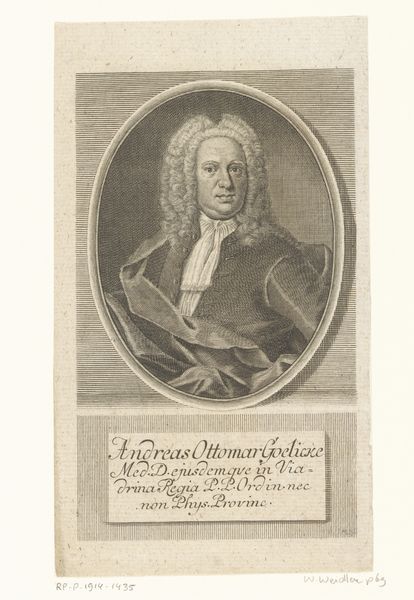
print, engraving
#
portrait
#
baroque
# print
#
engraving
Dimensions: height 143 mm, width 85 mm
Copyright: Rijks Museum: Open Domain
Editor: This print, "Portret van Dominique-François Rivard," dating around 1725 to 1767, is an engraving. It depicts a dignified man within an oval frame. I'm curious about the context. What does this piece say about the social standing or role of portraiture at the time? Curator: Precisely the right questions to ask. The engraving, likely mass-produced, points to a shifting dynamic of how status was portrayed and disseminated. Consider that the subject, a Professor of Philosophy, isn’t necessarily aristocracy. This suggests an expanding elite – one valuing intellect. The print functions almost like a promotional item. Where might such images have been displayed, and for whom were they intended? Editor: Maybe in academic circles or perhaps even by the family to show status and respect within the community? What strikes me is that it uses established artistic conventions typically reserved for the nobility but now applied to a scholar. Curator: Yes! We are seeing the construction of new hierarchies, visualized through the power of the printed image. Portraiture wasn’t merely representational; it played an active role in establishing reputations and social positions. Think of how this piece positions the *Collegio* of Beauvais through its association with a prominent philosopher. The politics of imagery in action. Editor: I see. So the engraving serves both as a personal portrait and as a form of institutional branding in an age of expanding public engagement with ideas? Curator: Exactly. This print is less about simple likeness and more about manufacturing an identity, a reputation in the burgeoning public sphere. A professor gains further validation when placed into visual dialogue with other historical leaders in similar portraits, don't you agree? Editor: Absolutely. Now I'm seeing how much it reveals about 18th-century society beyond just being an image of one man. Thanks! Curator: And I'm delighted at this discussion! Recognizing these dynamics in historical portraiture deepens our understanding of image politics.
Comments
No comments
Be the first to comment and join the conversation on the ultimate creative platform.
